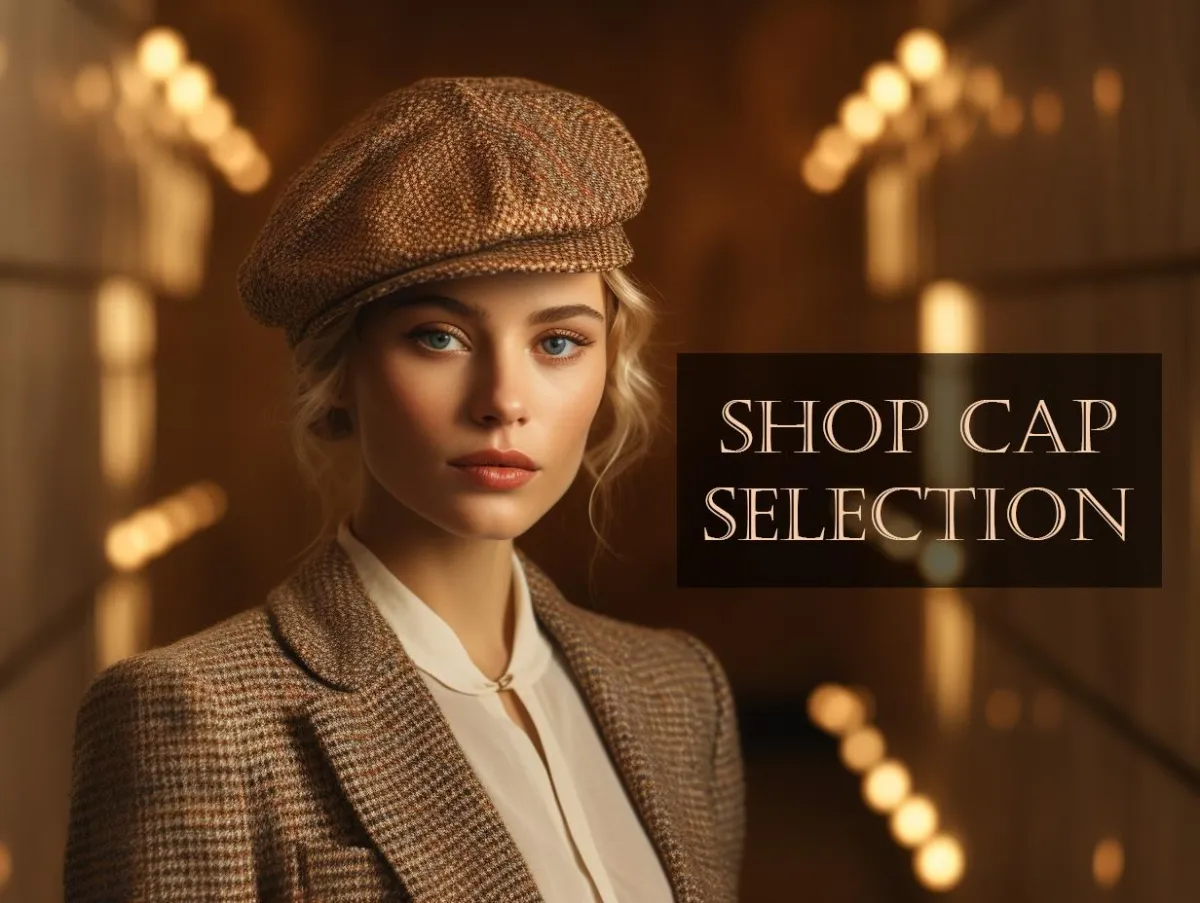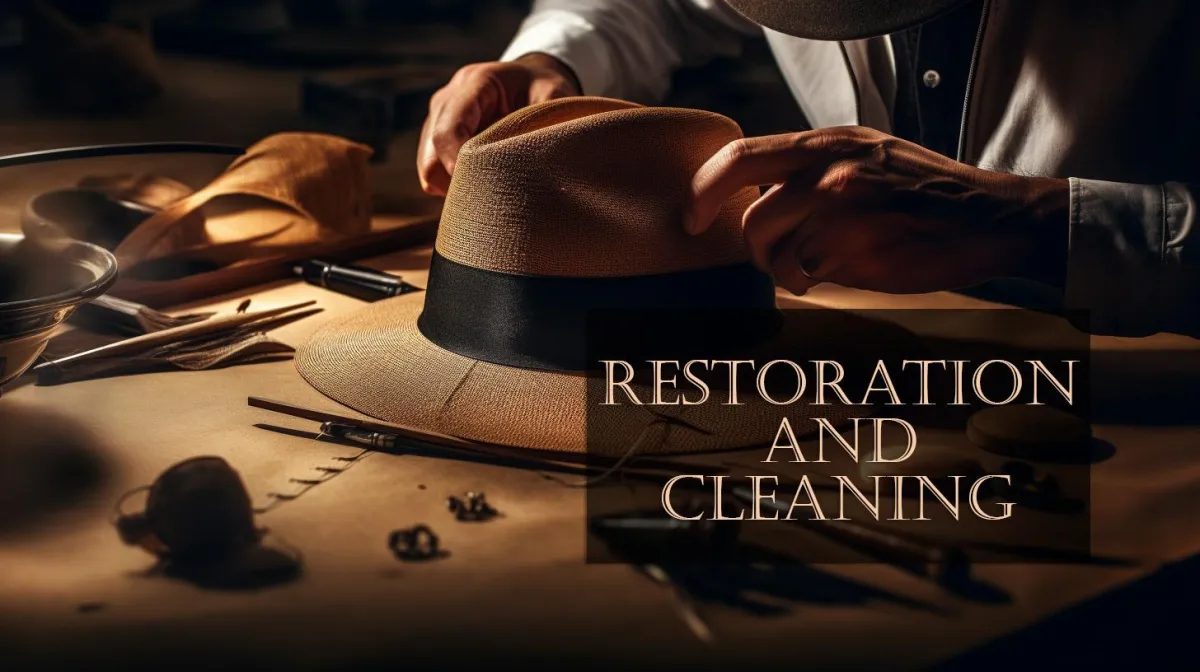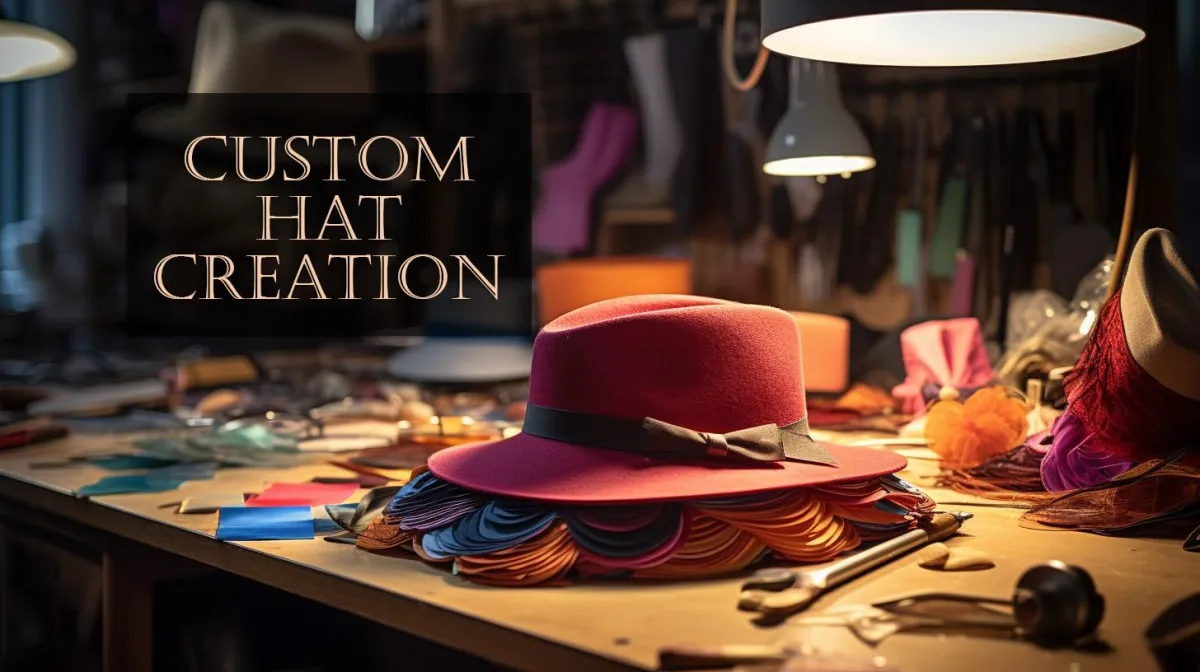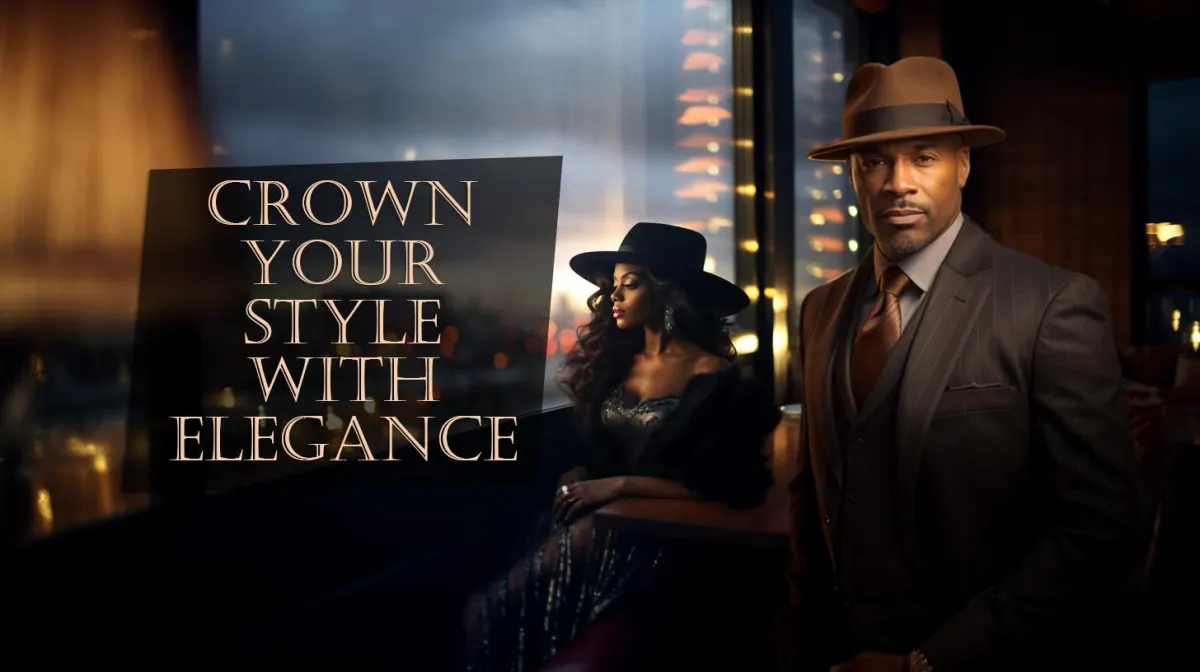
"Use Your Head!"
"Use Your Head"
At Alexander Hats, we believe that choosing the right hat is more than just a fashion statement; it's an expression of your unique identity and style. "Use Your Head" is our mantra, reminding us that each hat we craft or curate isn't just an accessory, but a reflection of personality, heritage, and individuality. Our journey began with a passion for timeless elegance and has evolved into a destination for those who appreciate quality and craftsmanship. Whether it's a classic Fedora or a chic Cap, each piece in our collection is a blend of tradition and contemporary style, designed to elevate your look and make a statement. With Alexander Hats, it's not just about covering your head; it's about uncovering your character.
- Keith Christmas
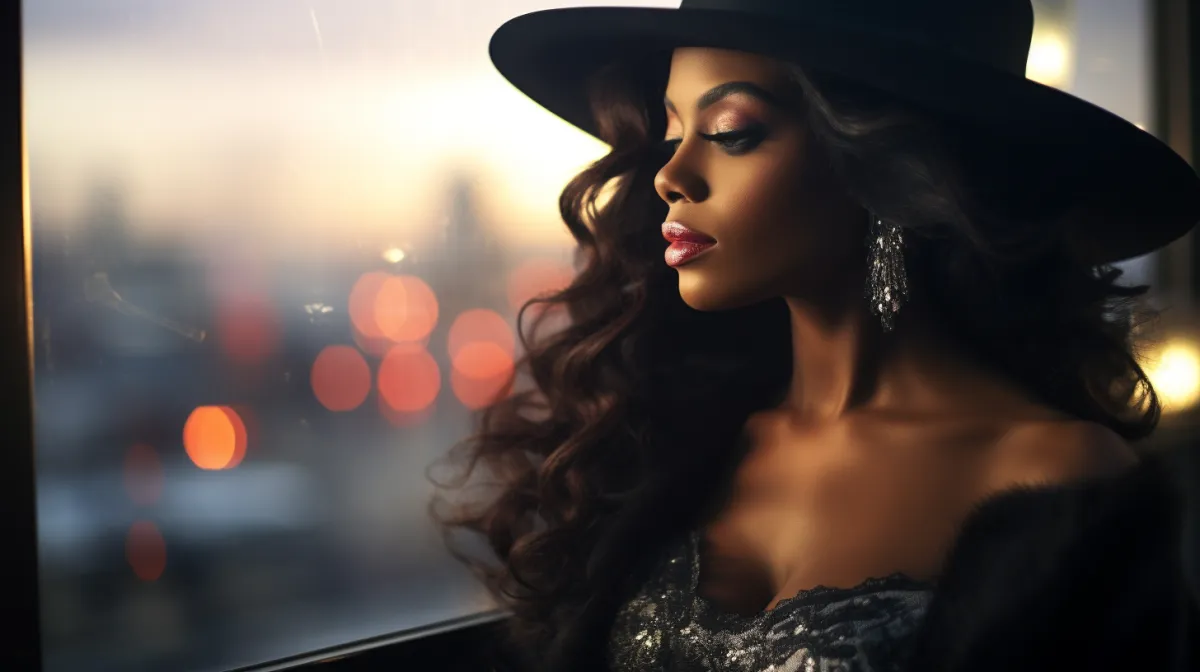
The Timeless Charm of Fedora Hats: A Complete Historical Journey
The Origin and Evolution of the Fedora Hat
The fedora hat, with its timeless style and classic silhouette, has a fascinating history that spans over a century. It originated as a female accessory in the play "Fédora" by Victorien Sardou in 1882, embodying elegance and sophistication in its initial form. The transition of the fedora from a primarily female fashion item to a staple in men's fashion occurred notably in 1924, when Prince Edward of Britain popularized the hat among men. This shift in its wearers marked a pivotal moment in the evolution of the fedora, leading to its enduring association with masculinity, elegance, and refinement.
The transition of the fedora from being a female hat to a fashionable accessory for men was a reflection of evolving societal norms and fashion trends. This transformation highlighted the hat's adaptability and its ability to transcend gender-specific fashion, becoming a symbol of style and sophistication for both men and women. The evolution of the fedora's wearers and its adaptation to diverse fashion preferences underscore its resilience and enduring appeal across different generations and cultural contexts.
The transition of the fedora from being a female hat to a fashionable accessory for men was a reflection of evolving societal norms and fashion trends. This transformation highlighted the hat's adaptability and its ability to transcend gender-specific fashion, becoming a symbol of style and sophistication for both men and women. The evolution of the fedora's wearers and its adaptation to diverse fashion preferences underscore its resilience and enduring appeal across different generations and cultural contexts.
The transition of the fedora from being a female hat to a fashionable accessory for men was a reflection of evolving societal norms and fashion trends. This transformation highlighted the hat's adaptability and its ability to transcend gender-specific fashion, becoming a symbol of style and sophistication for both men and women. The evolution of the fedora's wearers and its adaptation to diverse fashion preferences underscore its resilience and enduring appeal across different generations and cultural contexts.
The transition of the fedora from being a female hat to a fashionable accessory for men was a reflection of evolving societal norms and fashion trends. This transformation highlighted the hat's adaptability and its ability to transcend gender-specific fashion, becoming a symbol of style and sophistication for both men and women. The evolution of the fedora's wearers and its adaptation to diverse fashion preferences underscore its resilience and enduring appeal across different generations and cultural contexts.
Materials and Variations
The craftsmanship of fedora hats encompasses a rich variety of materials, reflecting the versatility and adaptability of this iconic accessory. Wool and cashmere are renowned for their softness and warmth, making them ideal choices for fedora hats worn during cooler seasons or in colder climates. On the other hand, straw and cotton fedoras offer a lightweight and breathable option, perfect for summer or warmer weather, providing both style and comfort.
In addition to the diverse material options, fedora hats also come in various styles and variations to cater to different preferences and practical needs. Rollable fedoras, for instance, are designed to be easily packed and transported, making them convenient for travel or outdoor activities without compromising on style or structure. Similarly, crushable fedoras offer a flexible and resilient design, allowing the hat to be folded or packed without losing its shape, providing a durable and adaptable choice for a wide range of occasions.
Fedora hats made from premium materials like rabbit, beaver, mink, and chinchilla have also gained popularity for their luxurious feel and fine quality, appealing to individuals seeking refined and elegant headwear options. These high-end materials not only elevate the aesthetic appeal of fedora hats but also speak to the timeless allure and sophistication associated with this classic accessory. Furthermore, the incorporation of innovative materials such as vegan leather and recycled fibers in modern fedora designs reflects a commitment to sustainability and ethical fashion practices, aligning the hat with contemporary values and environmentally conscious consumer preferences.
The evolution of fedora hat materials and variations has not only expanded the options available to wearers but has also contributed to the hat's ability to remain relevant and fashionable across different generations and cultural contexts. The blend of traditional and contemporary materials, coupled with practical and stylish variations, has cemented the fedora hat as a timeless and versatile accessory in the world of fashion.
Popularity Throughout History
The fedora hat's peak popularity in the mid-1920s was intertwined with the captivating era of Prohibition and the mystique of gangster culture, making it a symbol of sophistication and rebellion, [2]. This period marked the hat's association with an enigmatic allure that transcended fashion and reflected the societal dynamics of the time. Moreover, the mid-1920s also saw the fedora hat become a staple accessory for men in urban areas, emphasizing its practical benefits alongside its stylish appeal. The hat's ability to blend fashion with functionality contributed to its widespread adoption, making it an emblematic piece of men's attire during this period.
Following its initial surge in popularity, the fedora hat experienced a resurgence in the mid-1970s, 1980s, and 2000s, attesting to its enduring and cyclical appeal in the fashion landscape, [2]. The hat's practicality for activities like driving, use in public transport, and ease of storage contributed to its sustained popularity during these distinct time periods. This further highlights the fedora hat's ability to remain relevant across generations, adapting to the evolving needs and preferences of fashion enthusiasts while retaining its timeless charm and versatility, [2]. As a result, the fedora hat has maintained its status as a classic fashion statement, transcending temporal boundaries and continuing to captivate fashion enthusiasts through its rich historical legacy and adaptability.
The continued presence of the fedora in popular culture, particularly in films and television, has played a significant role in perpetuating its timeless appeal. For instance, the hat's portrayal in iconic films such as "The Godfather," "Indiana Jones," and "A Nightmare on Elm Street" has contributed to its enduring legacy, solidifying its status as a symbol of classic Hollywood glamour and allure. Moreover, the resurgence of fedora hats in the 21st century, as depicted in shows like "Mad Men" and "Boardwalk Empire," has provided an outlet for men interested in fashion without worrying about public perception, further underscoring the hat's enduring influence on style and popular culture.
Cultural Influence and Symbolism
Fedoras are deeply intertwined with early American society, reflecting elements of wealth and the women's rights movement, thus emphasizing their cultural significance. The association with wealth and societal status made fedoras a symbol of sophistication and elegance, often worn by the upper class as a display of their social standing and affluence. This historical connection to wealth and status has contributed to the enduring appeal and timeless charm of the fedora hat, making it an iconic fashion accessory with a rich cultural heritage.
Furthermore, the symbolism of fedora hats as a representation of masculinity and fashion statements has played a significant role in shaping their societal perception. The hat's transition from a female accessory to a fashionable item for men marked a shift in traditional gender roles and fashion norms. Over time, fedoras became synonymous with masculinity, exuding a sense of confidence and style. Its portrayal in popular culture, from classic films to iconic literary characters, has solidified its image as a symbol of sophistication and timeless elegance, cementing its place in fashion history and cultural symbolism.
The symbolic significance of fedora hats extends to various cultural movements and communities, with the hat being associated with jazz musicians, gangsters, and influential figures in literature and the arts. This multifaceted symbolism has contributed to the hat's enduring allure, as it continues to be embraced by individuals seeking to convey a sense of timeless elegance and cultural resonance through their fashion choices. The enduring representation of fedoras in diverse cultural contexts underscores their ability to transcend fashion trends and remain deeply embedded in the collective consciousness as an emblem of style and sophistication.
Celebrity Endorsement and Media Representation
The fedora hat has been an iconic fashion accessory, especially due to its association with notable celebrities and influential figures. For instance, Humphrey Bogart, known for his roles in classic film noirs like "Casablanca" and "The Maltese Falcon," became synonymous with the fedora hat, adding a touch of mystery and sophistication to his characters, [2]. Additionally, musicians like Michael Jackson and Justin Timberlake have integrated the fedora hat into their signature style, further propelling its popularity and making it a symbol of sartorial elegance and flair in the music industry.
Moreover, the portrayal of fedora hats in popular media has significantly contributed to their enduring appeal. For example, the character Indiana Jones, portrayed by Harrison Ford in the iconic film series, showcased the fedora as a practical and stylish accessory, solidifying its association with adventure and heroism. Similarly, the protagonists in classic film noirs, such as "The Maltese Falcon" and "Double Indemnity," exuded an air of sophistication and intrigue while donning the timeless fedora, perpetuating its allure as a symbol of classic Hollywood glamour and allure.
The representation of the fedora hat in popular media, films, and television shows has undoubtedly played a pivotal role in shaping its perception and cultural significance, ultimately solidifying its status as a fashion staple that transcends time and trends. The enduring presence of fedora hats in popular culture and their association with iconic figures from the entertainment industry has contributed to their timeless allure, ensuring their continued relevance and influence on contemporary fashion and style.
Practical Uses and Modern Fashion Trends
In addition to being a stylish fashion accessory, fedora hats are also highly practical. Made from materials like wool, cashmere, straw, cotton, and leather, these hats provide protection from different weather conditions, making them a versatile choice for individuals seeking both style and functionality. For example, wool fedoras are perfect for cooler seasons, offering warmth and insulation, while straw fedoras are ideal for sunny days, providing shade and ventilation.
Moreover, the enduring relevance of fedora hats in modern fashion is evident through their presence at various events and their popularity among celebrities. For instance, the sight of celebrities like Johnny Depp and Rihanna donning fedoras at red carpet events highlights the hat's ability to remain a staple in high-profile fashion settings. Additionally, the casual wear of fedoras by influential figures like Beyoncé showcases their adaptability to different styles and occasions, solidifying their place as a timeless fashion accessory that continues to captivate modern audiences.
The practicality of fedora hats extends to their diverse styles and variations, which cater to different activities and settings. For instance, the rollable and crushable variations of fedora hats provide a convenient option for travelers and individuals who need a hat that can easily be packed without losing its shape or style. This versatility ensures that fedoras can seamlessly transition from formal events to casual outings, reflecting their capacity to meet the evolving fashion needs of contemporary consumers. Additionally, the incorporation of innovative features, such as UV protection and moisture-wicking properties, in modern fedora designs underscores their adaptability to outdoor and recreational pursuits, further enhancing their practical appeal in today's fashion landscape.
Evolution of Fedora Hat Styles
The evolution of fedora hat styles is a testament to their enduring charm and adaptability. From the early 20th century to the present day, fedoras have continuously evolved their crease styles and finishes to stay in tune with changing fashion trends and cultural influences. For example, in the 1920s, fedoras were commonly seen with wide brims and deep creases, reflecting the fashion of the time and the association with Prohibition and gangsters. However, in the 1980s and 2000s, fedoras underwent a revival with narrower brims and lighter creases, catering to modern tastes and preferences.
The various finishes, such as satin bands, feathers, and unique color combinations, have contributed to the diverse range of styles available, ensuring that fedoras can complement a wide array of outfits and occasions. This adaptability has allowed fedora hats to remain relevant and appealing across different generations, showcasing their capacity to evolve while retaining their classic appeal.
The influence of historical events and fashion trends on the popularity of fedora hats has been profound, shaping their evolution and enduring appeal over the years. For instance, the association of fedora hats with Prohibition and gangsters in the mid-1920s not only elevated their popularity but also solidified their image as a symbol of sophistication and mystery. This historical context has continued to influence the perception of fedoras, as they are often associated with a sense of nostalgia and vintage charm, contributing to their sustained relevance in modern fashion trends.
Moreover, the transition of fedora hats from being a female accessory in the late 19th century to becoming a fashionable item for men in the early 20th century was influenced by shifting cultural norms and gender roles. This transition reflects the impact of social changes on fashion choices and the evolution of accessories as symbols of status and identity. By adapting to these historical shifts, fedora hats have remained a classic and versatile fashion statement, resonating with individuals across different generations and cultural backgrounds.
The resurgence of fedora hats in the mid-1970s, 1980s, and 2000s can be attributed to their portrayal in popular films and media during those periods. For example, the depiction of fedoras in iconic films like "The Godfather," "Indiana Jones," and "A Nightmare on Elm Street" not only reignited their allure but also embedded them in the collective memory of popular culture, ensuring their continued relevance in contemporary fashion. This exemplifies how historical events and media representations have played a pivotal role in shaping the perception and popularity of fedora hats, making them a timeless and iconic accessory.
Continued Relevance and Cultural Significance
In addition to their association with hipster culture, fedora hats have also made a significant reappearance in the 21st century, further emphasizing their continued relevance and cultural significance. This resurgence reflects their enduring appeal and their ability to adapt to changing fashion trends while maintaining their timeless elegance and charm. For example, the fedora has become a staple accessory for modern musicians and celebrities, showcasing its seamless integration into contemporary style and culture.
Moreover, the ongoing presence of fedora hats in popular media, such as in films, television shows, and music videos, continues to reinforce their cultural significance and influence on fashion trends. For instance, the portrayal of iconic characters like Indiana Jones, who is known for his signature fedora hat, has contributed to the enduring popularity and recognition of this classic headwear. This sustained representation in popular culture solidifies the fedora hat's status as a symbol of sophistication and timeless fashion, transcending generations and maintaining its appeal across diverse cultural landscapes.
The ability of the fedora hat to remain relevant in modern fashion and celebrity culture not only attests to its historical legacy but also highlights its continued impact on contemporary style, making it a symbol of enduring elegance and cultural significance, [2],.
The ongoing association of fedora hats with hipster culture and their reappearance in the 21st century highlight their continued relevance and cultural significance. This resurgence reflects their enduring appeal and their ability to adapt to changing fashion trends while maintaining their timeless elegance and charm. The continued presence of fedora hats in popular media, such as in films, television shows, and music videos, reinforces their cultural significance and influence on fashion trends. The ability of the fedora hat to remain relevant in modern fashion and celebrity culture not only attests to its historical legacy but also highlights its continued impact on contemporary style, making it a symbol of enduring elegance and cultural significance.
Conclusion
The fedora hat has an illustrious history and has remained a symbol of style and sophistication for men, but its influence extends beyond fashion. Its enduring appeal can be attributed to its practical uses such as protection from bad weather and aesthetic reasons, making it a versatile accessory for various occasions. For example, the rollable and crushable variations of fedora hats provide a convenient option for travelers and individuals who need a hat that can easily be packed without losing its shape or style.
Moreover, the fedora hat's continued presence in modern fashion and celebrity culture is evident through its popularity among notable figures. Musicians like Johnny Depp, Rihanna, and Beyoncé have been spotted wearing fedoras at red carpet events, showcasing the hat's ability to remain relevant and influential in the ever-changing landscape of fashion trends. The hat's association with hipster culture and its reappearance in the 21st century further emphasize its continued relevance and cultural significance, ensuring that it remains a timeless and iconic accessory.
Alexander Hats
Crafting Elegance in Headwear: Over 20 Years of Excellence in Quality Hats and Caps.
WE SHIP NATIONWIDE
(704) 215-6553
Store Hours
MONDAY - SATURDAY
11:00 AM - 7:00 PM EST
CLOSED SUNDAY
LOCATION
EAST RIDGE MALL
246 NORTH NEW HOPE ROAD
GASTONIA, NC 28054
Copyright © 2023 Alexander Hats

